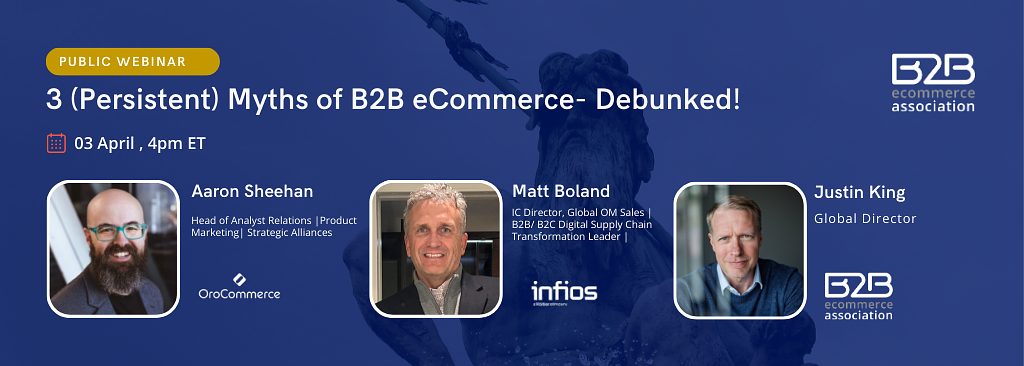In B2B distribution, most digital strategies focus on front-end experiences, building out eCommerce sites, modernizing product data, streamlining online catalogs.
But what if one of the most expensive, operationally draining processes is sitting quietly in the background, untouched, unmeasured, and costing you far more than you think?
That’s the case with returns.
Alex Witcpalek, who’s spent over a decade working with distributors and manufacturers to improve operational efficiency, puts it plainly: “Returns are the most insidious process a distributor has to deal with.” And yet, they remain one of the least optimized areas in the entire B2B ecosystem.
The Real Cost of Returns
Here’s what most companies miss: a single return can cost 8 to 10 times more than a standard order. While return volume in distribution may only hover around 1–3% of total transactions, the time, touchpoints, and disruption caused by each return create a cascading financial impact.
Think about it this way: a 3% return rate may seem insignificant. But if each return consumes the manpower equivalent of processing 8–10 orders, you’re actually investing resources equivalent to 25–30% of your order volume on activities that don’t generate revenue.
Returns affect every department:
- Customer Service receives the return request.
- Purchasing must coordinate with manufacturers.
- Warehouse teams inspect and verify incoming goods.
- Finance deals with credits, short payments, and disputes.
And through it all, the customer is left waiting, sometimes for days, on an approval process that should take minutes.
Why It Goes Unnoticed
Witcpalek estimates that 90% of distributors haven’t taken a deep look at their returns process. Many don’t realize how costly it is until a third-party consultant flags it during an operational audit. And when they finally do the math, the numbers are staggering, $176 per return is a common benchmark in the field.
So why hasn’t it been fixed?
Returns are highly fragmented. Each department handles a piece, but no one owns the whole. That means there’s no single system of record, no clear SOP, and often, no accountability.
And because returns don’t generate revenue, only cost, many leadership teams dismiss them as a low-priority issue.
Until it starts hitting the bottom line.
Returns Are a Digital Experience Issue
One of the most compelling points Alex raises is this: returns aren’t just an operational problem, they’re a customer experience problem.
In B2B, digital expectations are rising. Buyers want to initiate returns, check order status, and track credits without picking up the phone or chasing down a CSR. They want a process that’s transparent, trackable, and fast.
If eCommerce is supposed to drive customer self-service, returns must be part of that equation.
But today, most systems aren’t equipped to support it. Warehouse teams can’t scan returns the way they scan new inventory. WMS platforms don’t talk to ERPs. And CSRs rely on tribal knowledge to determine if a product is drop-shipped, eligible for return, or requires vendor approval.
As Alex put it, “Returns are multi-party. The end user wants to return it. The distributor doesn’t want to handle it. And the manufacturer doesn’t want to take it back. Yet all three are connected.”
A Connected Solution: Continuum’s Network-Based Model
Alex’s company, Continuum, is tackling the problem by connecting the dots between customer, distributor, and manufacturer through a network-based returns platform.
Their solution includes three core hubs:
- Customer Hub – A self-service interface for initiating returns with built-in logic (restock fees, return type, warehouse routing).
- Warehouse Hub – Tools that let warehouse teams scan and process returns with product data and photo verification.
- Vendor & Finance Hub – Automated communication and credit reconciliation between distributors and manufacturers.
In the HVAC space, for example, Continuum has helped shrink warranty processing times from 30 days to under 45 seconds. That includes validating warranty eligibility, locating replacement parts, showing live inventory at local branches, and filing manufacturer claims in real time.
That’s more than operational efficiency, it’s an entirely new experience for the field tech, distributor, and vendor alike.
Where to Start
Most distributors don’t need to overhaul their entire returns ecosystem overnight. According to Alex, the best place to start is with the customer hub, the first touchpoint where a return is initiated.
From there, teams can:
- Define clear SOPs (Who approves returns? What restock fees apply? Which returns require vendor contact?)
- Map the return process from request to credit.
- Quantify delays, disputes, and write-offs tied to unprocessed returns.
One client Alex mentioned had $700,000 in disputed invoices due to a missing return, later found sitting in the corner of the warehouse. In other cases, distributors write off hundreds of thousands in inventory at year-end simply because it’s too difficult to reconcile returns with vendor credits.
And if you’re managing annual buybacks or rebate programs, this gets even more important. Stock returns at the end of the year can impact rebate thresholds, cash flow, and your ability to optimize margins.
An Opportunity for Digital Teams
For digital and eCommerce leaders trying to justify budget or expand their roadmap, returns present a unique opportunity.
Instead of chasing vanity metrics or feature sets, leaders can point to hard cost savings and ROI. One Continuum client reduced returns staffing from three FTEs to two within two weeks of go-live, freeing up resources and improving cash flow at the same time.
And it’s just the beginning. Returns touch eCommerce, ERP, WMS, procurement, and finance. Improving this one process can create ripple effects across the entire digital ecosystem.
Final Thought
Returns aren’t exciting. But they’re foundational. They’re where operations, finance, and digital all intersect.
And if you’re serious about delivering a modern B2B experience, you can’t ignore them anymore. As Alex put it best:
“Returns don’t make you money, but how you handle them could be costing you a lot more than you think.”









